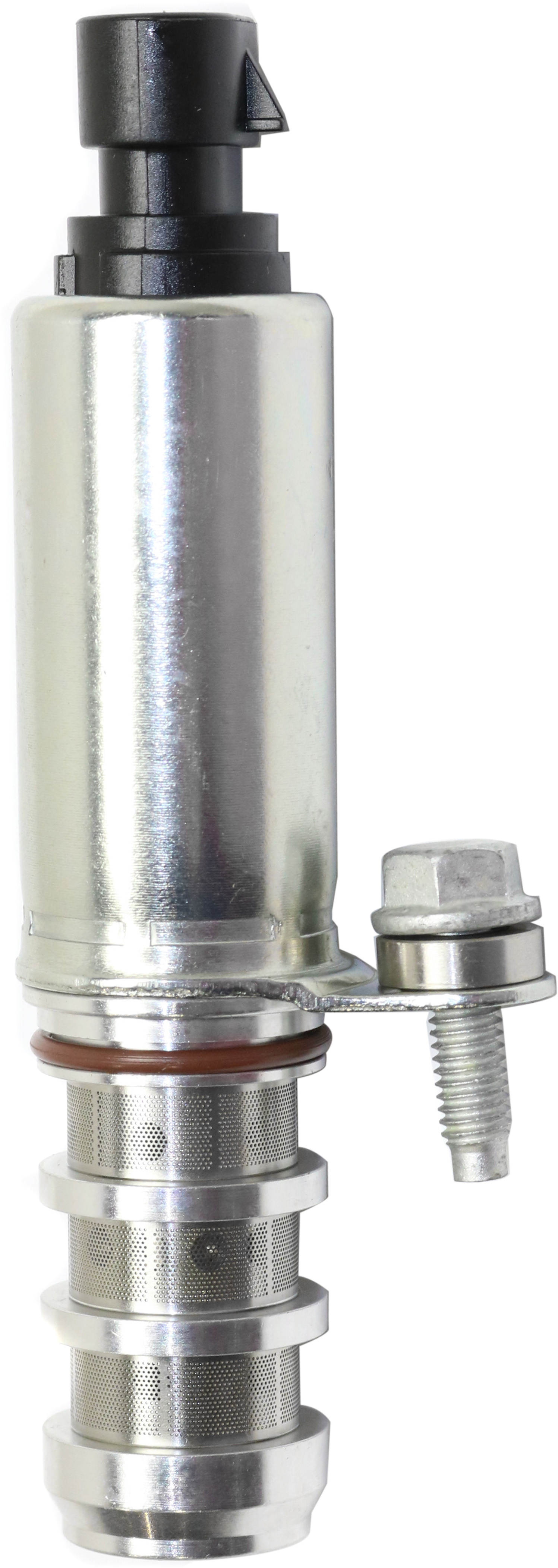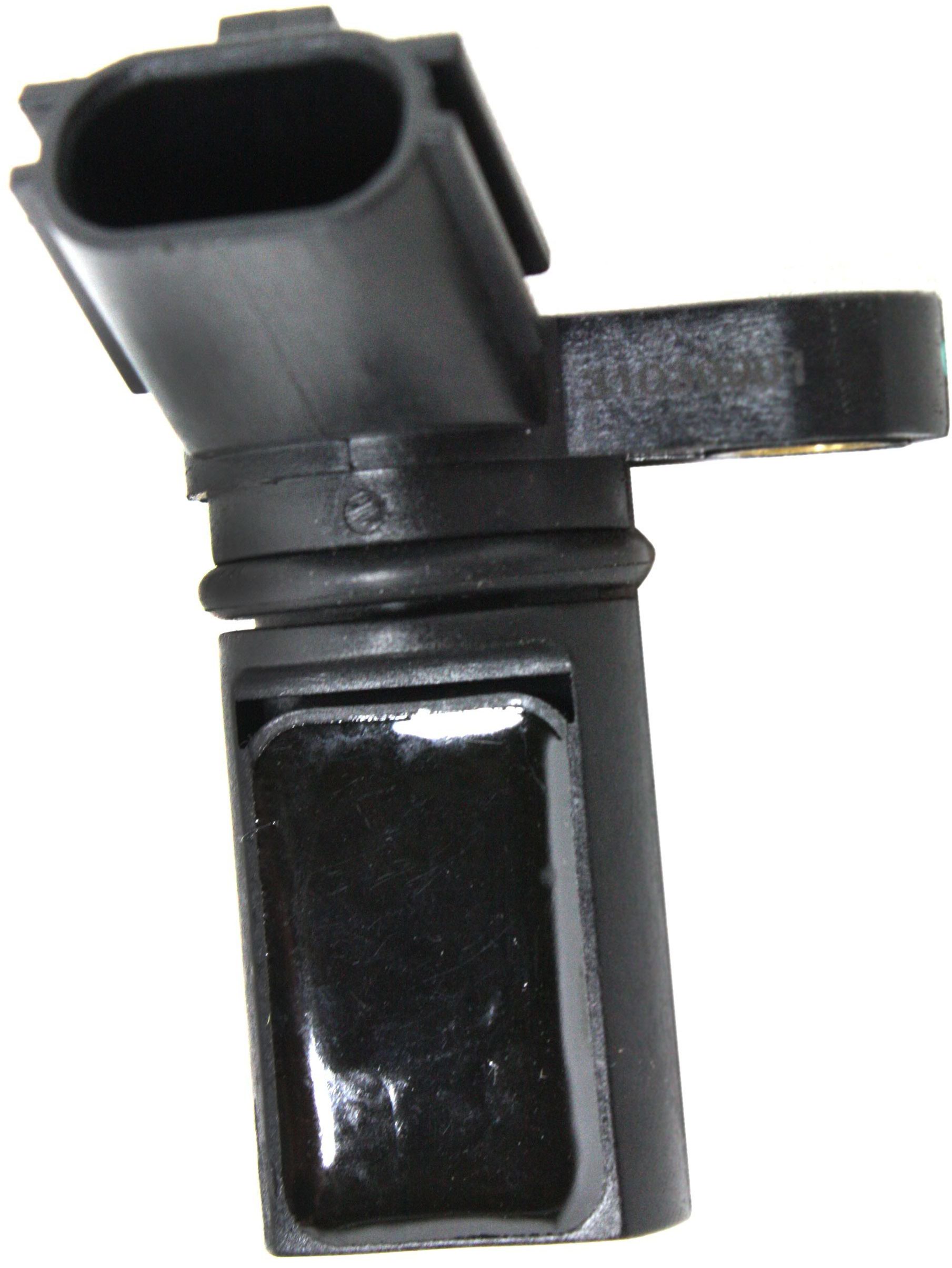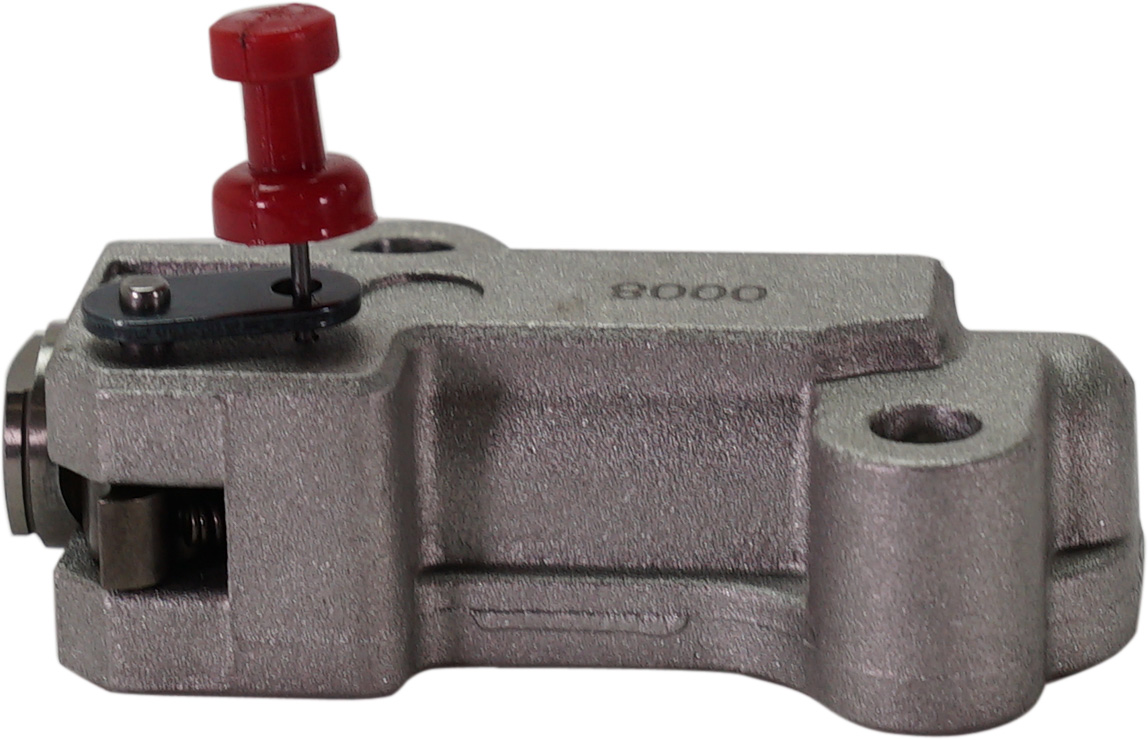If your check engine light is illuminated and you notice your engine is suffering from poor idling or struggling to start properly, there may be an issue with its camshaft position or angle. Check the problem with your scanner—if it registers a P0012 code, read this guide to learn more about what it means and how to resolve it.
What Does the P0012 Code Mean?
Diagnostic trouble code (DTC) P0012 stands for “Intake (A) Camshaft Position Timing – Over-Retarded (Bank 1).” The code indicates that your car’s computer has detected a difference in the desired camshaft position angle and the actual camshaft position angle. More specifically, the condition is set when the PCM detects that the camshaft has remained in a retarded position or that the camshaft timing on Bank 1 is above the maximum retard value.
The “A” in the P0012 code refers to the intake camshaft in an inline or straight overhead camshaft engine. On the other hand, it refers to the intake camshaft on Bank 1 if the engine functions on a V configuration.

“Bank 1” in the code refers to the side of the engine where the number one cylinder is located. Take note this applies to engines that employ a boxer or V configuration.
Note: Although code P0012 is a generic code specified by the Society of Automotive Engineers (SAE), the code’s definition may vary depending on the vehicle manufacturer.
P0012 on Some Toyota Vehicles
Code P0012 may appear on some Toyota vehicles. On a 2009 Toyota Camry 2.4L, for example, the code appears because of the following conditions:
- Failed camshaft timing oil control valve unit
- Failed OCV (the resistance of the OCV is from 6.9-7.9 ohms at 68ºF)
- Engine valve timing may be out of adjustment
- Clogged or restricted oil pipe and OCV filter
What are the Possible Causes of the P0012 Code?
What causes a P0012 code? The likely reasons that prompted the PCM to log this specific trouble code include:
- Bad or failing camshaft variable timing solenoid
- Bad or failing variable valve timing actuator
- Low engine oil levels
- Engine oil is incompatible with the manufacturer’s requirement for the engine
- Worn timing chain
- Failed timing chain guide or tensioner
- Contaminated engine oil obstructing the VVT solenoid screen.
What are the Common Symptoms of the P0012 Code?
Warning signs that you have a P0012 code on your hands include:
- Illuminated Check Engine Light
- Engine struggles to start properly
- Engine suffers from poor idling
- Engine experiences stalling
- Decreased fuel efficiency
- Rattling noise from the engine
If your scanner reads a code P0012 and your car displays at least one of these issues, bring your vehicle to your mechanic as soon as possible.
How to Diagnose the P0012 Code
There are many problems that can trigger the P0012 code, from a failing camshaft variable timing solenoid to a worn timing chain. This can make an accurate diagnosis difficult, especially if you’re not an automotive specialist. Let an expert handle the task if you’re not certain with your car repair skills.
On the other hand, if you feel confident in your automotive know-how, watch these helpful video references to get an idea of how to diagnose a p0012:
How to Fix the P0012 Code
Disclaimer: Due to the wide variability in vehicle makes and models, as well as other factors, the following information must not be construed as complete or the only definitive way to address a particular issue. Instead, the following content merely attempts to give you a better idea of what a do-it-yourself approach to the issue might involve. You are encouraged to find more technical resources regarding the subject or take your vehicle to a professional technician for the best results.
Before you get your hands dirty, you might want to check whether there are any technical service bulletins (TSBs) about this trouble code.
TSBs are announcements from the vehicle manufacturer about make-model-specific problems and how to resolve them.
These announcements are for dealership technicians, but many aftermarket companies republish these pieces of information for the benefit of auto repair shops and facilities.
You can also check TSBs online from organizations like the National Highway Traffic Safety Administration (NHTSA) and Environmental Protection Agency (EPA). You’ll need your vehicle’s identification number (VIN) to consult the online database.
But if there are no TSBs about the P0012 trouble code, here are two ways you can resolve the issue.
Change the Engine Oil
The first one is arguably the simplest solution一change the engine oil.
You can drain the engine oil whether it’s hot or cold. However, many technicians recommend draining the oil while it’s still hot because it drains more quickly.
Here’s how to change your engine oil.

- Set the parking brake and raise the vehicle high enough for you to reach the drain plug at the bottom of the oil pan and filter.
- Place a catch pan or basin under the oil pan.
- Use a wrench to loosen the drain plug until it’s completely out.
- Drain the oil. It’ll take about four to five minutes for most of the oil to seep out.
- Return the drain plug.
- Remove the oil filter. Make sure to hold it upright upon removal to prevent residual oil from spilling.
- Grab the new oil filter and wipe fresh oil around its rubber seal.
- Rotate the filter clockwise until it’s snug and the seal is in contact with the engine.
- Locate the oil filler cap on the engine.
- Add new motor oil until the manufacturer’s recommended level, then replace the cap.
- Pull out the dipstick. You should see the oil level near the “FULL” mark.
- Start the engine and let it idle.
- Don’t rev the engine. It’ll take a few seconds for the oil to pump through the new filter.
- Shut the engine off after a few minutes.
- Recheck the oil level on the dipstick. It should still be at the “FULL” mark.
- Discard the used engine oil by taking it to an auto repair shop or a facility that recycles motor oil.
Clean or Replace the Camshaft Oil Control Valve
If changing the engine oil doesn’t fix the issue, the next solution you can try is cleaning or replacing the camshaft oil control valve.
This method is usually applicable to engines with a variable valve timing system.
To begin, remove the oil control valve near the valve cover. This is usually held by one bolt.
Use a valve cleaner to clean the oil control valve and wipe it with a dry rag. Then, use a digital multimeter to get a reading.
The reading should ideally be between 6.9 and 7.9 ohms. If there are no readings, it’s time to replace the camshaft oil control valve.
An In-Depth Look at Camshaft Angle and VVT
The camshaft angle is only adjustable on engines equipped with variable valve timing (VVT).
With Variable Valve Timing (which is very common on today’s engines) camshaft timing can be altered dynamically while the engine is under load. This strategy is used to enhance fuel economy, increase power, and reduce tailpipe emissions.

So how does the Variable Valve Timing work? The ECM/PCM sends a “pulse width” signal to the oil control solenoid, allowing the delivery of oil pressure, usually to vane chambers in the cam gear, which is designed to alter cam timing based. Some early VVT units used helical gears that moved in or out to alter camshaft angles. But to make this happen, the ECM/PCM turns the oil control solenoid on and off really fast. The longer the solenoid is on during each pulse, the more oil pressure is delivered to the actuator and the more cam angles are changed. When control oil pressure is reduced, a spring returns the camshaft to its default angle within the gear.
Here’s a basic rundown on how it works on some engines:
The variable cam timing (VCT) actuators are built into the camshaft driven gears and are operated by oil pressure delivered to them through the oil control solenoid to adjust when the intake camshaft opens and closes the valves.
- Whenever the actuator is advanced, the relationship of the camshaft with its gear is changed so that the intake valves open at 30 degrees before top dead center of piston travel in that cylinder (BTDC) and allows them to close at 36 degrees after bottom dead center of piston travel.
- When the actuator is fully retarded, the intake camshaft open the valves 17 degrees after top dead center (ATDC) of piston travel and allows them to close at 83 degrees after bottom dead center.
- Note that the valves are open for equal time in all cases. The lift and duration remain the same on this system – only the timing of the valve opening changes.
- The VCT system is able to actuate the intake camshaft at any position between these two values and uses the oil control solenoid coupled with engine demand by using the CMP sensor as a feedback signal.
- Also note that for all engine speeds and power levels, there is an optimum intake valve opening position. This is the reason for variable valve timing. The VCT system provides more low end torque, while improving idle quality and emissions.
The Cam Sensor (CMP) on the bank being controlled provides feedback so the ECM/PCM can determine how much camshaft advance is needed (depending on engine load, speed, etc.) and how well the camshaft is actually being controlled by the action of the solenoid.
The ECM/PCM sets a target (desired) angle for the camshaft and then duty cycles the solenoid, delivering oil pressure to the camshaft actuator within the camshaft drive gear to change the relationship of the gear to the camshaft.
If the camshaft angle is commanded to change the cam timing but it doesn’t happen or doesn’t happen quickly enough, the ECM/PCM maximizes the oil control solenoid pulse width in an attempt to force the cam angle change and then sets the P0012 code.
Where to Get Motor Oil for Your Vehicle
Changing your engine oil to fix the P0012 code starts with finding the right motor oil for your vehicle. After all, using incompatible oil may result in leaks or even engine damage. Thankfully, CarParts.com has you covered by making it easier to look for compatible auto parts and accessories.
We’re confident in the quality of our products because we source them from trusted manufacturers. This ensures our customers get replacement pieces that last as long as their vehicle’s lifespan. Not only that, but we guarantee fit thanks to our built-in vehicle selector that allows you to browse products that match your vehicle specifications.
Don’t let faulty or worn-out components compromise your engine’s performance. Save your time and money by shopping at CarParts.com now!
Products Mentioned in this Guide
Shop this Project






Any information provided on this Website is for informational purposes only and is not intended to replace consultation with a professional mechanic. The accuracy and timeliness of the information may change from the time of publication.



 Camshaft
Camshaft
 Variable Timing Solenoid
Variable Timing Solenoid





















Should you still drive your vehicle